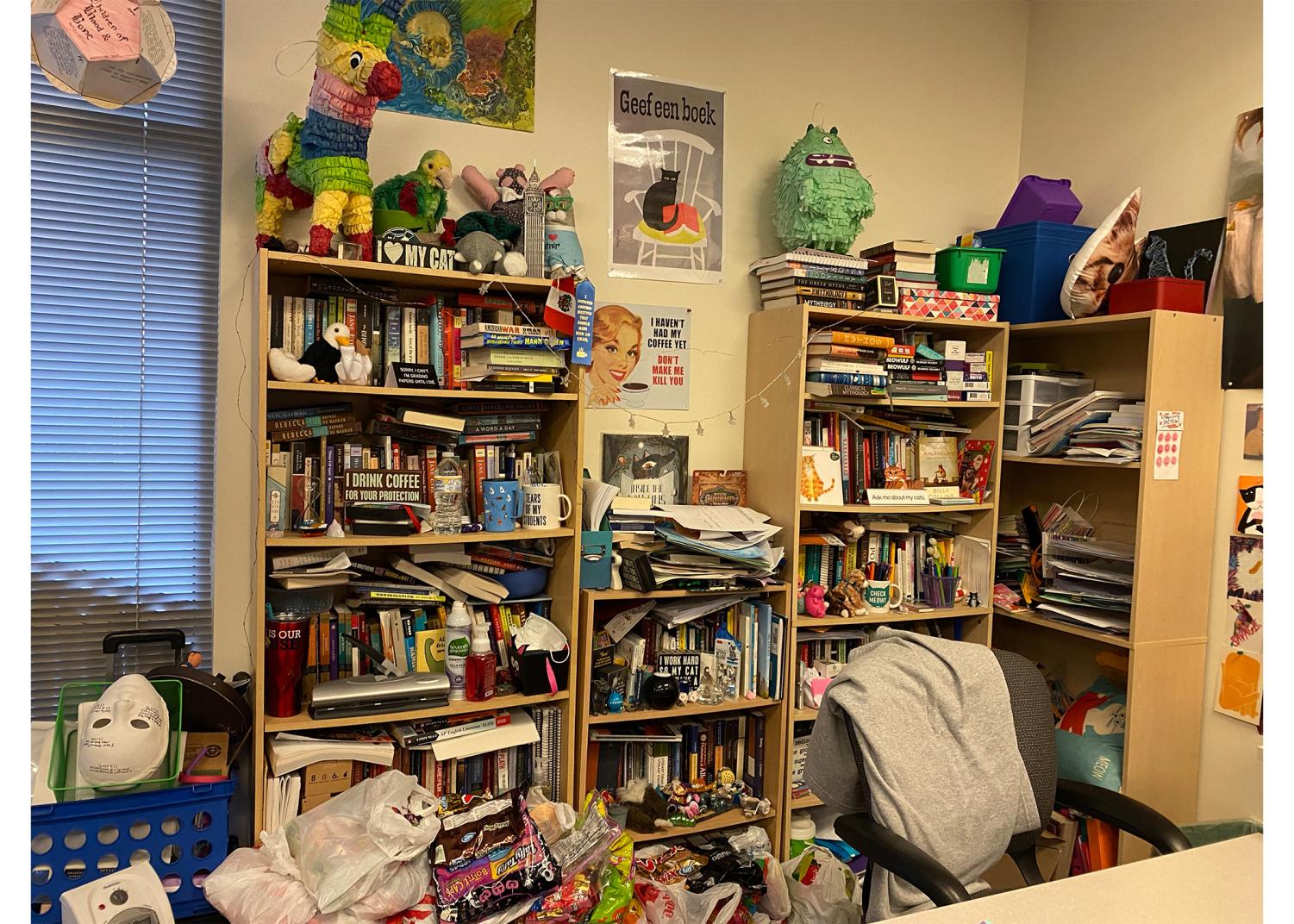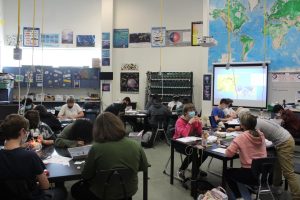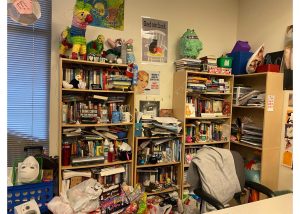Impact of Classroom Decorations on Learning
Attending school is a universal experience among the youth. Whether education occurs in a public, private, or homeschooling style it is no surprise that a lot of time is dedicated to learning.
From around the ages of 5-18 students spend at least seven hours in a classroom environment. In an article titled “Is There Enough Time to Learn” on Ed100.com it mentions that, “Each year consists of about 6,000 waking hours. Children in America, on average, spend about 1,000 of them in school”. It seems that the amount of time students dedicate to school is increasing each year as well.
How does the style of a classroom affect students’ learning abilities? How did forced online learning last year, as a result of Coronavirus, shift students’ academic interests? And does the atmosphere of a classroom truly change a student’s outlook on education?
Junior Bridget Andrew, an active and involved student, shares her opinion on classroom decorations.
“I prefer a fully decorated classroom because it creates a fun environment to learn in and encourages me to stay focused,” Andrew said.
While the majority of Olathe North students agreed that a bright, fun, and engaging classroom some found that it brought a distraction.
Students such as freshman Allenah Mebae haven’t had much time to reflect on their new high school learning environment.
“I would say that classroom decorations don’t really affect me that much and I rarely notice them,” Mebae says.
Yet in the end, the way a classroom is set up comes down to individual teachers’ preferences. Kara Pittman, a social studies teacher at Olathe North, recently transferred classrooms at the beginning of the school year. Moving to a larger space Pittman had to rethink the setup of her new classroom.
“The classroom used to have a projector covering the board, which I had them move to a different wall,” Pittman says.
She also shared her outlook on classroom decorations.
“Too much on walls is overwhelming but I do believe that they can be used as helping references, but doesn’t always have to be academic,” she added.
Personal interests in a learning environment are a common recurrence in decorating styles. From teachers’ favorite colors and patterns to their favorite band posters. These additions not only create space teachers are comfortable in, but also invite a stronger student-teacher relationship.
English Teacher Amanda Fleetwood focuses on lighting and constructing a welcoming space in her classroom.
“I usually only have one big light on at a time and then a bunch of small ambient lighting. I personally feel really anxious in a super well lit room and it becomes distracting,” Fleetwood said.
Overall, both students and teachers at Olathe North tend to agree that although decorations and a classroom setup are important they tend to differ depending on the subject. Senior Emily Maiwat feels that some classrooms need a more bright and energetic feel, while others thrive in a basic and focused style.
“I think it depends on the classroom, sometimes I feel like it makes it more fun and welcoming, but it can also bring distractions,” Maiwat said.
Gracya is a senior and this is her first year on the paper. She’s looking forward to sharing the passion she has for the school with other students....










